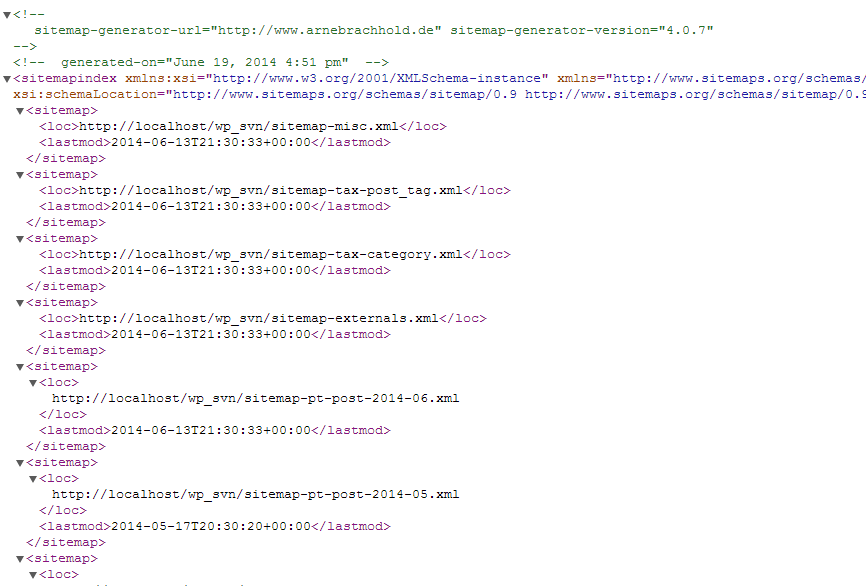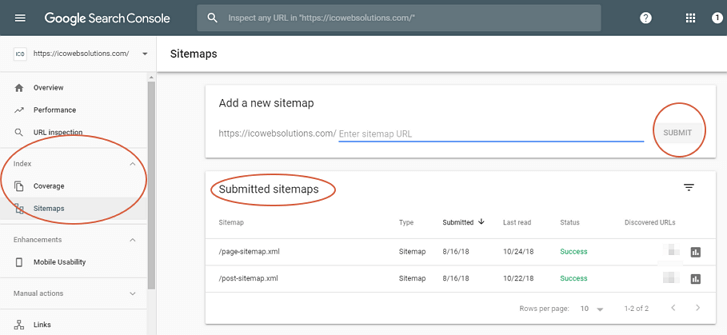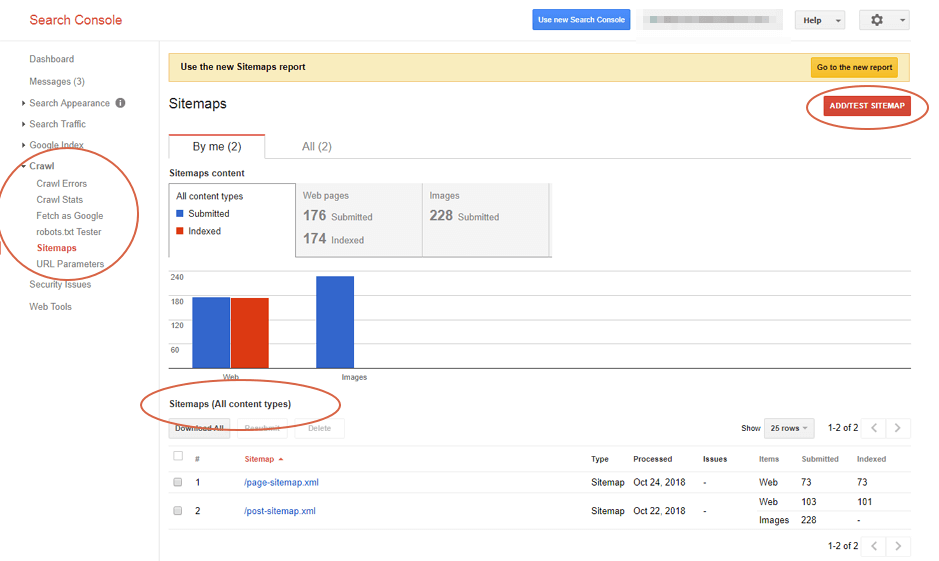What is a Sitemap?
A sitemap works as a navigation tool which helps users and search engines to navigate through a website in an organized, sorted and detailed manner.
When you hire a website design company in India then it should be their responsibility to ask you of your goals or objectives from that website. This is because a clear objective of the content in a website helps to create a clean and organized site map of a website. And it is used by a site’s users or search engines to crawl into your site’s content and understands it’s importance.
It acts as a blueprint of the website for better website designing. For a great user experience, good navigation is always recommended. And for good navigation and clear grouping a Sitemap is the key. It is recommended to create a sitemap before web designing and development, for gaining better results.
XML and HTML Sitemap
Mainly there are two types of Sitemaps: XML and HTML. Let us learn about them individually.
XML Sitemap
An XML Sitemap acts as a roadmap of your business website which guides search engines towards all the important pages of your website.
XML site maps are critically important for Search Engine Optimization because they help search engines to locate your important web pages, even if your site misses out them on internal linking. With XML sitemaps search engines like Google finds, crawls and understands the web pages and the website structure very clearly.
You can either create manually or use third party tools like Yoast SEO plugin or WordPress Google Sitemap Plugin to generate an XML site map.
Here is an example of XML sitemap:
 Do you need an XML sitemap?
Do you need an XML sitemap?
As per Google your website needs an XML sitemap if your website;
- Has many pages
- Has large archives
- Is newly launched and therefore has minimum to zero external and internal links
- Uses rich media content
HTML Sitemaps
Just like XML sitemaps are for search engines, HTML sitemaps are for the site users.
A site user/visitor can easily navigate through the site by using the HTML sitemap on the website. In this sitemap the pages are neatly structured and linked to respective pages on the website.
If at all a site visitor is facing difficulty in locating a particular page, then HTML sitemap makes it very easy and convenient for them to find that page on the website.
Here is an example of HTML sitemap:
How to ensure Google finds your Sitemap
To make sure Google finds and crawls through your sitemap you have to add the XML sitemap to your Google Search Console account.
In the recently updated search console, in the left section you will find an “Index” tab. Right below it you will see Sitemaps, just click on it. And as you click you will be see the sitemaps section. Here you will see if you have already submitted the sitemap or not.
If you have not submitted the sitemap then add a new Sitemap and click submit. Here is the image illustration:

And if you are using the old version of search console then in the left section expand “Crawl”. Among the options expanded you will see “Sitemaps”. Click on it.
Just as you click you will see the section which gives you details about sitemap submitted. And also the option to add XML sitemap if not already submitted.
Here is the image illustration;
 Importance of a Website Sitemap in SEO
Importance of a Website Sitemap in SEO
Typically there is no downside of having a Sitemap in/for your website. In fact having one will work in favor of your SEO efforts. Therefore it is highly recommended to submit an XML sitemap so as to help Google and other search engines to find and crawl your site. And include a HTML sitemap to facilitate navigation for your users.
Here are some of the benefits of having a sitemap.
#1. Sitemaps enhance search engine rankings
XML sitemaps are a guide for the search engines to know your site’s content and pages in a structured and organized manner. They make sure that your website gets the right place among the organic search engine results page (SERPS).
Allowing the search engines to find and crawl the content on your websites is a piece of cake with XML sitemap submission. Just submit a single file, and update it whenever you make changes in your content. This saves a lot of time and effort.
XML sitemaps facilitates search engine crawling of all the important pages, posts, multimedia files and other content on the website. Almost all the search engines support and understand XML sitemap and a website notifies the search engines by insertion of the XML sitemap into the website’s robots.txt file.
All in all sitemaps boost the search engine rankings of a website, thereby giving a push to the SEO campaign. Moreover when a website appears on Page 1-top position of SERPs, then obviously it will have more views by genuine users. That indicates more traffic, which is in turn more chances of sales and conversions.
Therefore Sitemaps are a win-win factor for both users and search engines. Users get exactly what they want in form of search results giving websites which match their search queries. And this is only possible because of the search engines’ pointed crawling and indexing of a website.
#2. Site maps aid site optimization
When a website designer creates a site map, it essentially creates a page with titles as anchor text linked to respective pages on the website. Further, when search engine robots crawl through this page, all the pages linked from this page will also get crawled and indexed by the search engines.
Thereby getting all the important pages on the website indexed by search engines. It also leads to an important observation that a site map should be placed on the homepage of a website for effective optimization.
#3. Effective to avoid duplicate content
Duplicate content is a strict no-no for an effective SEO campaign targeting a higher search engine ranking.
If you are a website that publishes a lot of content then you must be crossing ways with your content been published on other sites.
Also, some of you must have faced the situations wherein your content gets republished on other websites without your permission.
Well, unfortunately both of the above scenarios point towards Duplicate content.
And, Google hates duplicacy.
Google’s Panda Update which is strictly about measuring a site’s quality with it’s spam-fighting algorithms, penalizes sites with duplicate content. And trust me revoking the penalty is not at all easy. So, better avoid the unfortunate situation.
An XML site map informs Google about the date and even the time of creation of content on your website. Thereby, proving that your content is the original one as opposed to the others’.
#4. Faster communication to Search Engines
Regularly updated and fresh content on website adds points on your corner when it comes to search engine rankings. High quality content is more likely to be ranked as opposed to low quality-copied content.
While adding fresh content is important, letting Google know about the updates or creation is no less important. And what better way than XML site maps. Just make the updates in the file and you are good to go.
Quality content is not just about the number of words in it. Rather it includes various factors like:
- content relevance to search queries,
- naturally including keywords and LSI keywords,
- readability score,
- appropriate linking of content – internal and external, and
- proper content formatting which includes heading tags, images and other media options.
#5. Properly organized content
When you create an HTML site map you get a complete bird’s eye view of your site structure, which is again an important factor of on-page SEO.
When you plan of posting a new content you will get the glimpse of the complete hierarchy of the pages and sections. And hence you can place the content in the right section without any confusion.
Conclusion
Sitemaps are extremely important for your website’s SEO health and should not be ignored at any cost. Create and submit both XML and HTML sitemaps for better results and rankings.
Need help in creating and submitting your website’s sitemap?
Contact our digital marketing experts for best results.



